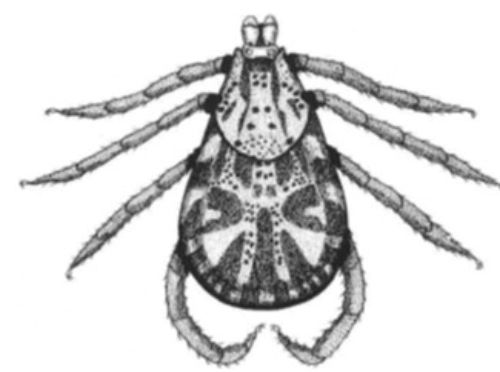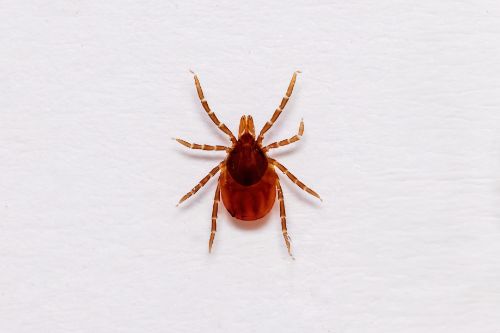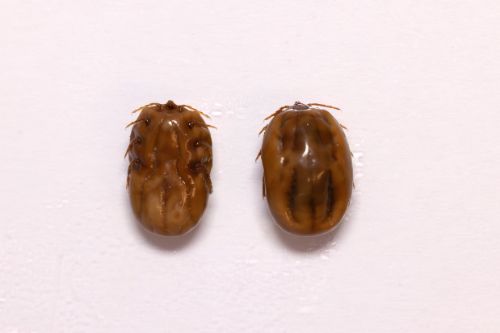Introduction to Diagnostic Medical Parasitology
Ixodidae
Virtual Microscope



Characteristics / Biology of Acarina
- 8 legs (exception: some larval stages of mites and ticks have only 6 legs)
- Ticks have capitulum («head» with mouth parts)
- Spheric body
- With dorsal shield (Scutum)
- Capitulum dorsally visible
- Palps resemble clubs
- No coxal organs
- Incomplete metamorphosis (hemimetabole development) (larvae look the same as adults)
- Hosts: Wild animals and pets, human
• Medical significance:
- Important vectors of virus, babesia and bacteria (rickettsia, spirochete) in human and veterinary medicine
Vectors of numerous diseases; e.g.,
- spotted fever
- Lyme disease (Borrelia burgdorferi)
- tick-borne encephalitis (TBE)
- Locale skin reactions
Lifecycle:
- A single egg laying (thousands of eggs)
- 1 nymphal stage
- One blood meal; can last for several weeks
- few hosts
- widespread distribution